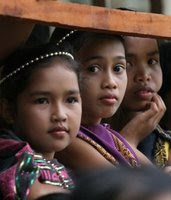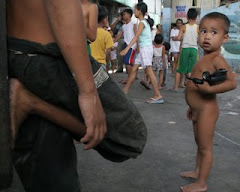In the summer of 1997, Ricky, a 12 year old boy died of TB (tuberculosis) accompanied by an advanced stage of pneumonia. One may wonder why such an energetic young soul could die of such a disease designed for much older folks who have little or no knowledge on proper health practice whatsoever.
Since he was 9, Ricky worked as stevedore/utility boy on a pier that caters mostly to ships carrying cement sacks for its cargo. His job exposed him to dust and to a pretty heavy concentration of asbestos, which aggravated his already worsening colds.
Like Ricky, there are more than 250 million working children across the globe. All trying to make ends meet with a meager salary on a daily basis. Although outlawed by international conventions on child labor policies in every country, child labor still proliferates rampantly even in first world countries such as the US and in Europe.
In Asia, the most populous continent, has the largest share of the worlds’ working children 61%, followed by Africa with 32%. Latin America and the Caribbean have 7%.
Though data vary by country and region , world wide figures show that more than two thirds of working children are engaged in agriculture and related farming activities; the rest are in manufacturing, trade, hotel and restaurant, domestic service, transport, construction, mining and quarrying. As well, a large number children work on street hawking goods, shining shoes, running errands and cleaning cars. Only about 5% of the worlds working children are found on the semi formal sector, like export industry.
In some countries, up to 20% of economically active children in rural areas, and up to 5% in urban areas are under the age of 10.
In all the regions of the world, more boys than girls work, with average ratio of 3 is to 2. However, if domestic work in their own household is to be taken into account, girls would exceed the number than that of the boys. Some survey results show that the majority of children working for 9 hours or more, everyday of the week, often do hazardous occupations. A large number suffer injuries or illness fr5om their work, more than 20% according to our surveys. Some 50 to 60 million children ages 5-11 work in hazardous conditions.
Source of statistics: the ILO
Children are also trafficked across continents to be sold as slaves and are submitted to prostitution, and in spite of the strict prohibitions international child protection laws implement, child pornography is more dangerous and more psychologically damaging than any other form of child abuse. It is noteworthy that about at least a million children a year are forced, or otherwise coerced, to enter the sex trade for the purpose of prostitution and pornography; many of them are sold and trafficked across international borders.
In countries where national security is futile, children are gathered in the hundreds to take part in arms struggle. Currently there are more than 300,000 child soldiers, many of them forcibly recruited, are taking part in armed conflicts around the world. Some are already adolescents but most are as young as 10 years old. Their living and working conditions are harsh, worse; they are compelled to witness and participate in acts of brutality and banditry.
In the Philippines, the national capital region or the NCR in particular, holds the highest recorded number of children in labor (788,565 in 2001). In region 5 there are 68,320 child laborers recorded. There are more unrecorded working children in the streets of every metro city in the country now, and they are growing in an alarming rate.
The leading cause of child labor boils down to single denominator, Economy. In third world countries such as the Philippines and India an average family may have to scrounge for whatever meager income the family makes in a week. A growing number of displaced children are roaming the streets everyday, driven by poverty.
The Department of Justice Special Committee for children anchored through the Republic Act No.7610 compel the people to recognize that the dignity of children should be respected, maintained and preserved through the defense and protection of their rights.
I have often thought of that fateful day Ricky past away, and I never cease to imagine how many more Rickies are out there in the world, trying to earn that dream, somehow hopeful that life would someday be fair to them and grant them back what life took away...the child within. For whatever faults, however mischievous, and for whatever simple wishes they have, they are, for all the life in the world, still children.
Consider this.
idlegrass
Subscribe to:
Post Comments (Atom)


No comments:
Post a Comment